Muscat, which is on the northeast coast of Oman, lies on a trade route that is both regionally and internationally important, and has been for centuries. For thousands of years the Sea of Oman, which Muscat faces, was a route between the ancient civilisations of Mesopotamia, Persia and northwest India and beyond. Today it is a conduit for oil flowing out of the Arabian Gulf and manufactured products coming in. Nationally, Muscat straddles one of the few natural routes from the Sea of Oman, west through the Al Hajar Mountains to the areas beyond.
Modern Muscat is like a matryoshka doll, with smaller versions of itself inside – a town within a town. There are four areas that are all, generally, called Muscat by people outside the city. However, depending on the context, the place being described might be the little tiny Muscat in the centre or the larger one that envelops the others.
What to see and do in Muscat
Sultan Qaboos Grand Mosque
This mosque is breathtaking and is undoubtedly worth a visit, if simply to appreciate its magnitude, craftsmanship and the architectural design. Even the non-religious visitor will probably be moved in some way by a tour of its interior. Construction began in 1995 and took six years to complete. Made from marble and wood with sandstone cladding, the four corner minarets stand 45m high and along with the 91m central minaret represent the five pillars of Islam. In addition to the prayer areas, there are ablution areas, a library, an administrative quarter and public toilets. The coffin of Sultan Qaboos bin Said was brought here and placed in front of the mihrab for funeral prayers, before he was buried on 11 January 2020 in the royal cemetery in Bawshar.
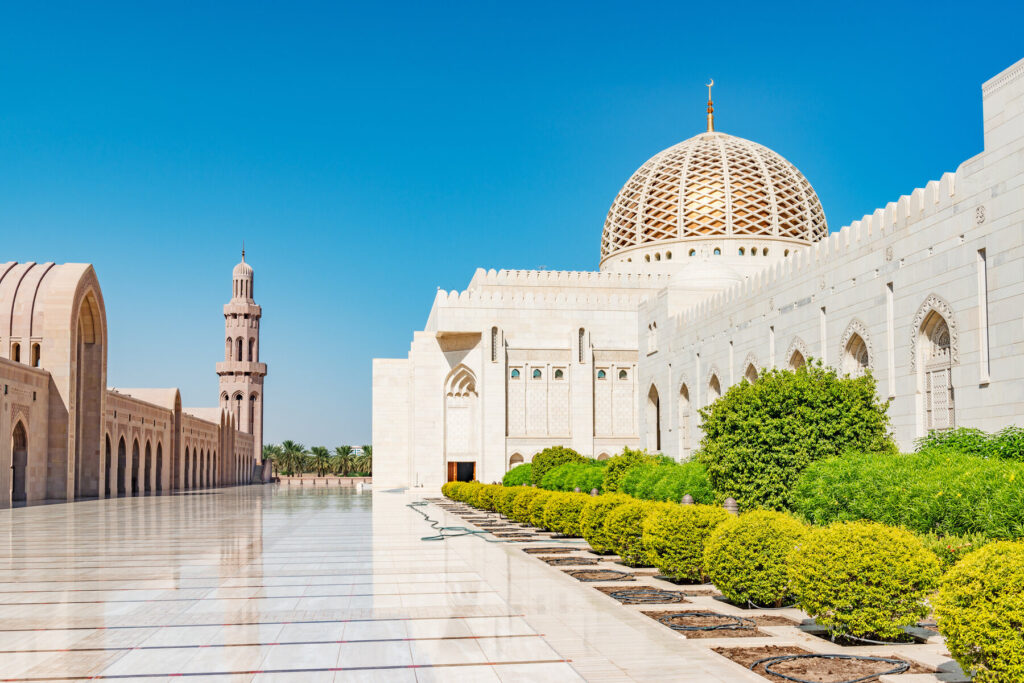
In the main prayer hall the Persian carpet, made of fine wool and cotton in 28 colours, is probably the second-largest hand-woven Persian carpet in the world. It used to be the largest, but is now surpassed, at least in size, by the Persian carpet in the Sheikh Zayed Grand Mosque in Abu Dhabi. The magnificent 50m-high central dome and the central Swarovski crystal chandelier, measuring 8m wide by 14m high, in the main prayer hall are stunning. Other chandeliers, stained-glass windows, carved wooden doors and Safavid-style tile work add to the mosque’s almost overwhelming appearance.
To the north and south of the main buildings are riwaqs (open-air arcades). Each riwaq has decorated niches with tiling from areas of the Islamic world. The tranquillity and serenity of the riwaqs with their archways and courtyards is quite an experience in itself. The Sultan Qaboos Grand Mosque in its entirety stands as an assertive symbol of Oman’s confidence and spirituality.
Mutrah
Spreading south from its crescent bay towards the chocolate-brown escarpments of the impressive ophiolite hills, Mutrah is the engaging port town that historically served Old Muscat. For more information on this specific area, see our Mutrah page.
Al Alam Palace
The sultan’s Al Alam Palace (The Flag Palace) was completed by 1976 at its seafront location in Muscat. Approached by a red tarmacked ceremonial mall, similar in purpose to The Mall approach to Buckingham Palace, it is the principal palace, though not residence, of the sultan. On the palace’s roof the sultan’s personal standard is flown when he is in Muscat governorate and lowered daily at sunset. The current palace replaced a former complex of buildings, including the harem and the customs house. Blue-and-gold columns on the main palace provide a sense of glamour, making the building every bit the ideal palace for an exotic Arabian town.
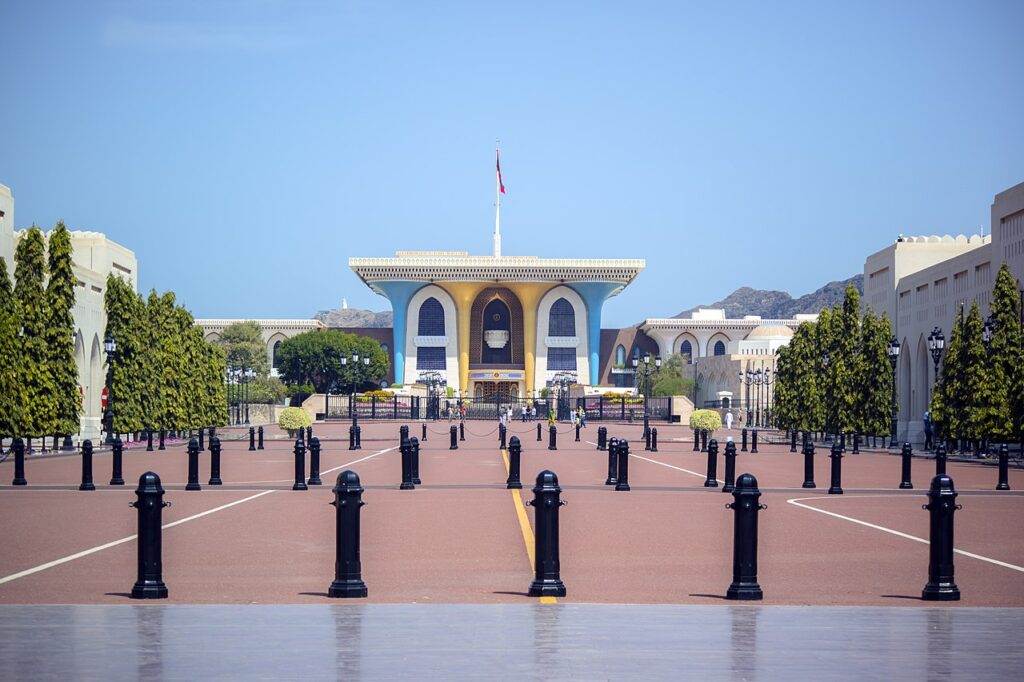
On its left front, the palace has an English-style garden and its ceremonial entrance is flanked by cannons and raised flower beds. A large grass lawn, which has been used for receptions on occasions such as Armed Forces Day, is laid out to the rear. To the right (east) of Al Alam Palace is a white marble guest palace complex that is built where previously the British consulate, the former embassy for the USA, a collection of old government buildings and private houses were located. This guest palace, completed in 2010, has vast state reception rooms, decorated in a style similar to the interior of the Royal Opera House, as well as royal suites for visiting heads of state.
Al Jalali and Al Mirani
The Portuguese began to build these forts in 1527, though their current versions date from 1587 and 1588, respectively, following various attacks by the Ottomans.
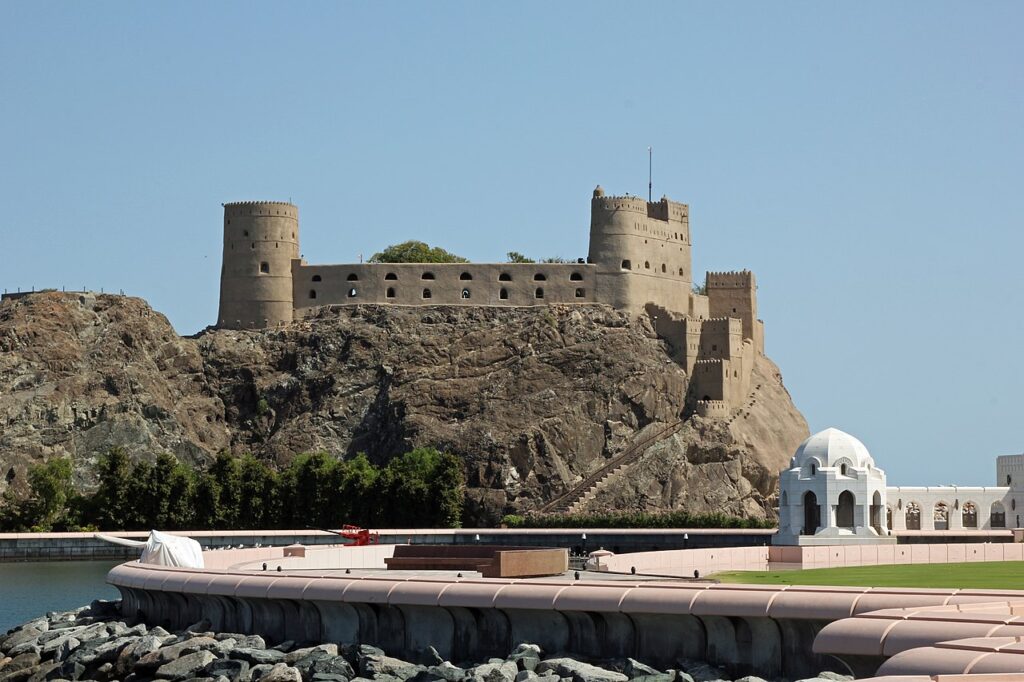
Al Jalali Fort, to the east, has a substantial gun platform with eight British ships’ cannons dating from the early 19th century. These are visible if you stand below Al Mirani Fort and look at the lower arched openings in Al Jalali Fort. Above the stairs that rise from the harbour into the fort are a complex of rooms including a small mosque and a museum with a display of firearms and Omani metalwork. Until shortly after 1970, Al Jalali was Oman’s main jail; it is now in use as a garrison for Oman’s Royal Guard. The western fort Al Mirani’s principal function today is as a barracks, which are accessed by an elevator concealed in the most prominent tower.
These forts, the watchtowers on the hills and the eastern section of the town’s wall are all that remain of Portugal’s occupation of Muscat. Some remnants of the governor’s residence and barracks survived as late as 1895, while the Portuguese cathedral ruins finally succumbed to redevelopment during the first half of the 20th century.
Bait Al Zubair
Opened in 1998, Bait Al Zubair is an Omani heritage museum and cultural centre, designed to give an insight into Omani lifestyles and traditions, with old photos and traditional furnishings. Inside the various buildings there is a small lecture theatre, gift shop and coffee shop, as well as a reference library and a majlis (meeting room) with an exhibition of old maps, nautical information and models of traditional dhows.
The main museum, Bait Al Bagh (bagh is a Persian word for garden, an indication of the historic links between Oman and Iran) was purpose-built to house the Al Zubair family’s collections. On the ground floor are displays of khanjars, men’s dress, swords and weapons, women’s dresses, jewellery, chests and household items, all well labelled and explained. Coins and stamps are displayed on the second floor.
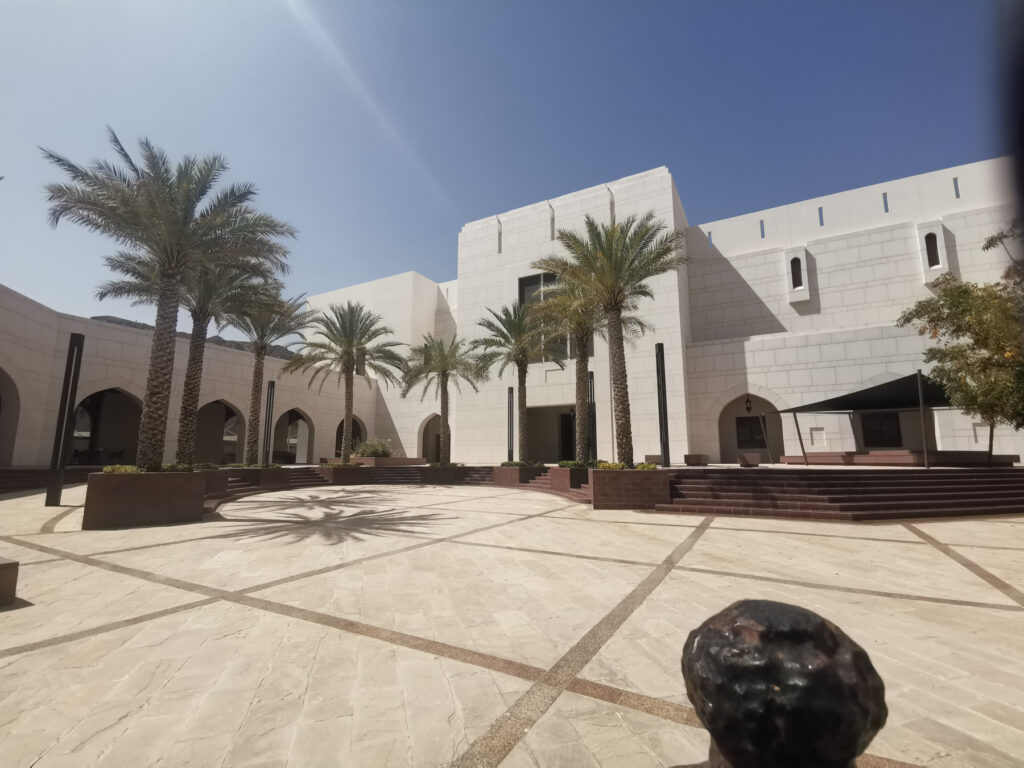
A separate building, Bait Al Dalaleel (House of Comfort), to the right after the entrance gate, is an original old house that shows the materials used in its construction and is furnished in a style typical of the early 20th century in affluent Omani homes.
The third building, Bait Al Oud (The Grand House), to the left after the entrance gate, holds exhibitions on the ground floor, while the two floors above have household furniture, maps and other historical documents. In the courtyard area is a miniature falaj and running water, and even a working model of a pottery kiln. To the rear of the courtyard is Bait Al Nahdhah (House of the Renaissance), which holds occasional exhibitions.
Bait Al Zubair is also home to the Centre for Omani Dress dedicated to preserving and disseminating information about Oman’s traditional dress.
National Museum
The National Museum is Muscat’s major museum. The heavy exterior of the museum gives way to a spacious, welcoming interior on two floors. On entering, an airy double-height room, the Land and the People Gallery, displays Oman’s clothing and household goods. Off this are accessed six other galleries displaying military arms, aflaj and a maritime heritage hall, with life-sized parts of Arab dhows. A Time-Line gallery acts as a route between the ground and first floors. On the first floor is a substantial pre-history gallery with a recreation of a Bronze Age boat and stone tools, including Acheulean axes. An original example of the triliths from southern Oman is exhibited; in this case it was relocated from Ad Duqm.
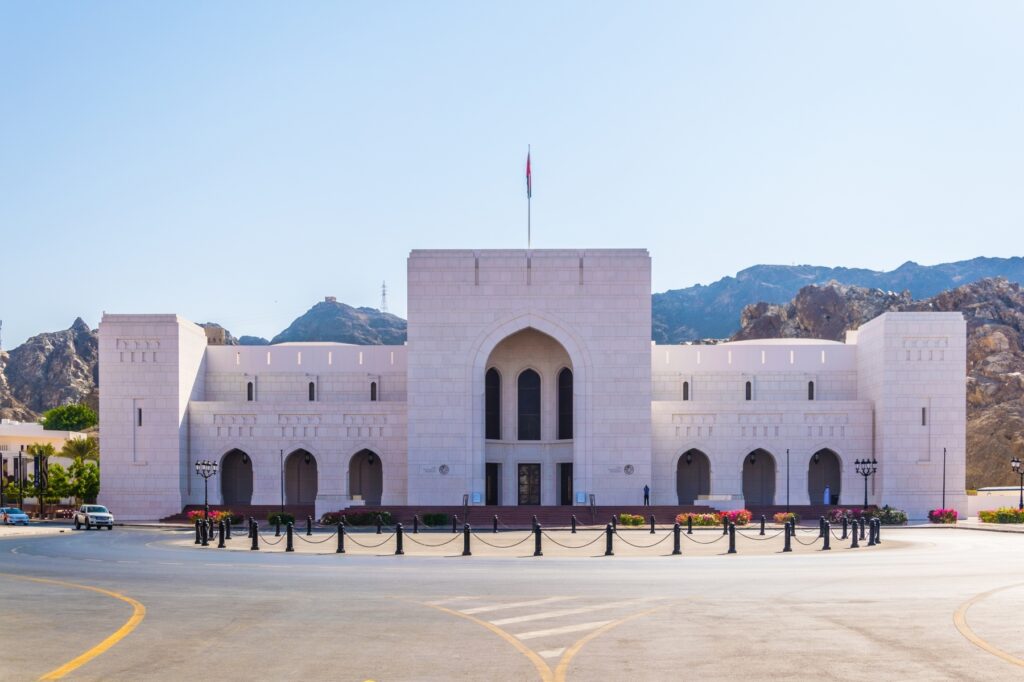
Other rooms include the splendours of Omani Islam with an original mihrab from an old Omani mosque and exhibits associated with Oman’s modern period. Look for a special section covering Sultan Qaboos, including the throne used by him on his accession. Special exhibitions are held in co-operation with other museums, the State Hermitage Museum and Louvre included, and pieces from London’s Victoria and Albert Museum are on loan.
Getting to Muscat
Most international airlines serving Oman fly into the elegant, spacious Muscat International Airport in the city’s western area. See our travel and visas page for more information.